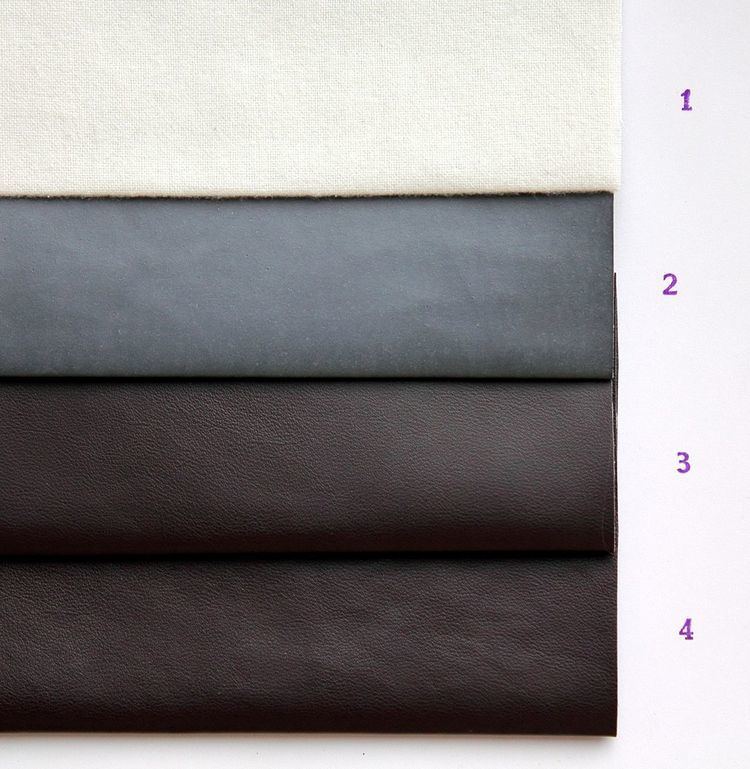 | ||
Alternative leather (bicast leather) is a fabric or finish intended to substitute for leather in fields such as upholstery, clothing, footwear and fabrics, and other uses where a leather-like finish is required but the actual material is cost-prohibitive, unsuitable, or unusable for ethical reasons.
Contents
- Clothing and fabric uses
- Poromeric imitation leather
- Corfam
- Leatherette
- Brand names
- Vegetable based alternatives
- References
Production of synthetic, artificial/faux "leathers" has recently evolved so that a shell coating layer goes on top of a synthetic polymer blend, so the definition of "synthetic", "artificial/faux" leather methods of production no longer necessarily requires composite leather blends of [coated] raw-tanned cowhide grains and/or its fibrous layers.
Clothing and fabric uses
Synthetic leathers, at times made from plastics, are often used in clothing and fabrics. Artificial leather is marketed under many names, including "leatherette", "faux leather", "vegan leather", "PU leather" and "pleather".
Poromeric imitation leather
Sometimes referred to as poromerics, poromeric imitation leathers are a group of synthetic "breathable" leather substitutes made from a plastic coating (usually a polyurethane) on a fibrous base layer (typically a polyester).
The term poromeric was coined by DuPont as a derivative of the terms microporous and polymeric.
Corfam
The first poromeric material was DuPont's ill-fated Corfam introduced in 1963 at the Chicago Shoe Show.
Corfam was the centerpiece of the DuPont pavilion at the 1964 New York World's Fair in New York City. Its major advantages over natural leather were its durability and its high gloss finish that could be easily cleaned with a damp cloth. Its disadvantages were its stiffness which did not lessen with wearing, its relative lack of breathability, and easy confusion with non-breathable cheaper products. DuPont manufactured Corfam at its plant in Old Hickory, Tennessee, from 1964 to 1971. After spending millions of dollars marketing the product to shoe manufacturers, DuPont withdrew Corfam from the market in 1971 and sold the rights to a company in Poland.
Corfam is still used today in some products, an example being certain types of equestrian saddle girth. Corfam shoes are still popular in uniformed professions where shiny shoes are desirable.
Leatherette
Leatherette is a form of artificial leather, usually made by covering a fabric base with plastic. The fabric can be made of a natural or a synthetic fibre which is then covered with a soft PVC layer.
Leatherette bound books and 20th century cameras are good examples of leatherette. Leatherette clothing of various kinds (including lingerie) also exist.
A disadvantage of plastic "leatherette" is that it is not porous and does not allow air to pass through it; thus, sweat can accumulate if it is used for clothing, car seat coverings, etc. One of its primary advantages, especially in cars, is that it requires little maintenance in comparison to leather, and does not crack or fade easily.
